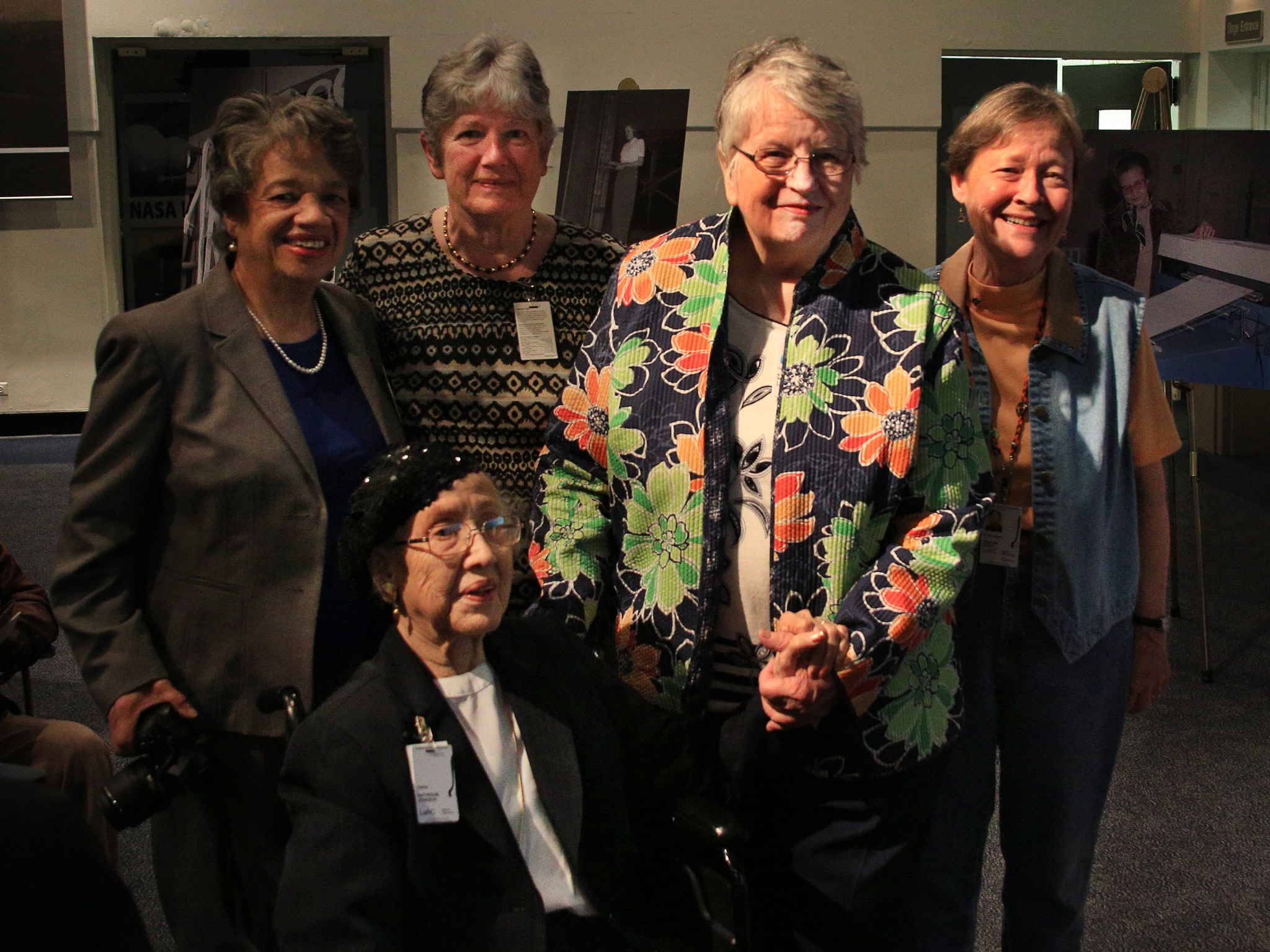After growing up with a father who was an atmospheric scientist at NASA’s Langley Research Center and a mother who was a professor of English at Hampton University, Margot Lee Shetterly figured there was at least one thing she was pretty much destined to do.
“I guess it’s inevitable that I would become somebody who would write about scientists,” she said.
In fact, “Hidden Figures,” a book Shetterly is writing about the history of the African-American women who came to work at NASA Langley starting during World War II, is slated to land on bookstore shelves sometime in 2016.
But on a recent visit to NASA Langley, Shetterly’s focus wasn’t on her book. She was at the center to give a Women’s History Month talk on the female mathematicians — or human computers — who worked behind the scenes at NASA Langley to support the men so often credited with making major advances to America’s aeronautics and space programs.
Much of what Shetterly discovered about the human computers came to light as she was researching her book. She was intrigued enough by her findings to begin working on an entirely new project. Along with Duchess Harris, a professor of American Studies at Macalester College in St. Paul, Minn., Shetterly is collecting oral histories, photos, research reports and other artifacts from human computers and compiling them into something called The Human Computer Project.
“Really, the importance of what I’m doing, I think, is to put the stories of these women on the historical record so that we can all celebrate the foundational work that they did,” she said.
And it was important work. Today, a quick glance at NASA’s organization structure reveals a number of women in key roles, including Lesa Roe, who has served as NASA Langley’s center director and is currently detailed as a deputy associate administrator for the agency; Ellen Stofan, who serves as chief scientist; and Elizabeth Robinson, who serves as chief financial officer.
“The reason these women are able to be in the positions they are and influencing the policy and the science that’s being done at NASA today has very much to do with the female pioneers who came to NASA, and to its predecessor the NACA, back in the 1930s, the 1940s, through the 1950s and ’60s,” Shetterly said.
The first woman to break the gender barrier at NASA Langley — or what was then known as the Langley Memorial Aeronautical Laboratory — was Pearl Young. She came to Langley in 1922 as an engineer, and eventually became the chief technical editor for the National Advisory Committee for Aeronautics. A theater at the center now bears her name.
But an even bigger door opened in 1935 when a group of five women came to the center to form a computer pool. The idea was for these women to process all the data coming in from wind tunnel tests and flight tests. It began as an experiment, but became something much bigger.
“This turned out to be such an amazing thing that the numbers [of women] started to grow here,” she said.
By 1942, the human computers had become essential to operations at the center. A memo that circulated that April put it this way:
“The engineers admit themselves that the girl computers do the work more rapidly and accurately than they could.”
Langley also began recruiting African-American women as human computers in the 1940s, but due to segregation laws these “West Area Computers” were kept separate from their white counterparts.
This began to change in the 1950s. Katherine Johnson, who was in attendance at Shetterly’s talk, joined the West Area Computers in 1953, but spent only a few weeks there. By 1958 she had become an aerospace technologist and eventually joined the Space Task Force, where she calculated trajectories for some of the Mercury missions, including MA-6, John Glenn’s first U.S. orbital flight.
A bit wary of the calculations coming from the actual physical computers of the time, Glenn famously said, “Get the girl to check the numbers.” He was referring to Johnson.
“This is a really strong example of how women rise to the occasion in a very high pressure scientific endeavor,” Shetterly said. “All eyes on this man as he’s going into space and this is the woman who stood behind the man and checked the numbers. You can’t have a better example of what women are capable of doing in a scientific organization.”
Johnson was one of several women who worked their way out of the computer pool and into actual engineering jobs — something that began happening with increasing frequency through the 1950s and into the 1960s.
In the dwindling days of human computing, as actual computers became a part of day-to-day life, one of the last women to climb out of the pool and into the ranks of NASA’s engineering elite was Christine Darden.
Darden, who was also in attendance at Shetterly’s talk, started her career at NASA Langley’s computing pool in 1967, but fought to become an engineer and ended up being one of NASA’s preeminent experts on supersonic flight and sonic booms. She was also the first African-American woman at NASA Langley to be promoted into the senior executive service.
Shetterly thinks stories like Darden’s have helped to illustrate that “women are more than capable of not only doing the most intense technical work, but managing that work.”
That’s important in a culture that, according to Shetterly, still has the lingering perception, from both men and women, that women aren’t as capable as men of doing technical, rigorous scientific work. Shetterly is afraid that can’t-do attitude will drive young girls away from a growing STEM workforce, and she hopes to counter it by telling stories like Johnson’s and Darden’s.
“I think one of the most powerful things we can do is to tell these stories,” she said.
After Shetterly’s talk, Johnson, now 95, took time to chat with well-wishers. Though she’s in a wheelchair and her voice was sometimes difficult to pick out over the background noise, she’s still got a sharp sense of humor. “I’m looking for a job,” she cracked during a conversation with an engineer who had come to hear the talk.
In a more serious moment, Johnson said she will always look back fondly on her 33-year career at NASA Langley.
“I was doing something I liked doing every day, came to work happy to be here and enjoyed doing it all the time,” she said.
Darden, now 71, said she’s heartened by how far women have come at NASA Langley, particularly since she can recall an era when “the efforts failed a couple of times before women did become heads of offices and were actually leading technical projects.”
She’s also heartened to see Shetterly telling those women’s stories.
“I think it’s a great job she’s doing researching this and I think she’ll do a great job in writing it up, too,” she said. “She’s very passionate about it.”
March is Women’s History Month. For more information on The Human Computer Project, visit thehumancomputerproject.com.
Joe Atkinson
NASA Langley Research Center



























